Celebrating International Day of Girl Child: Progress and Way Forward for Bangladesh
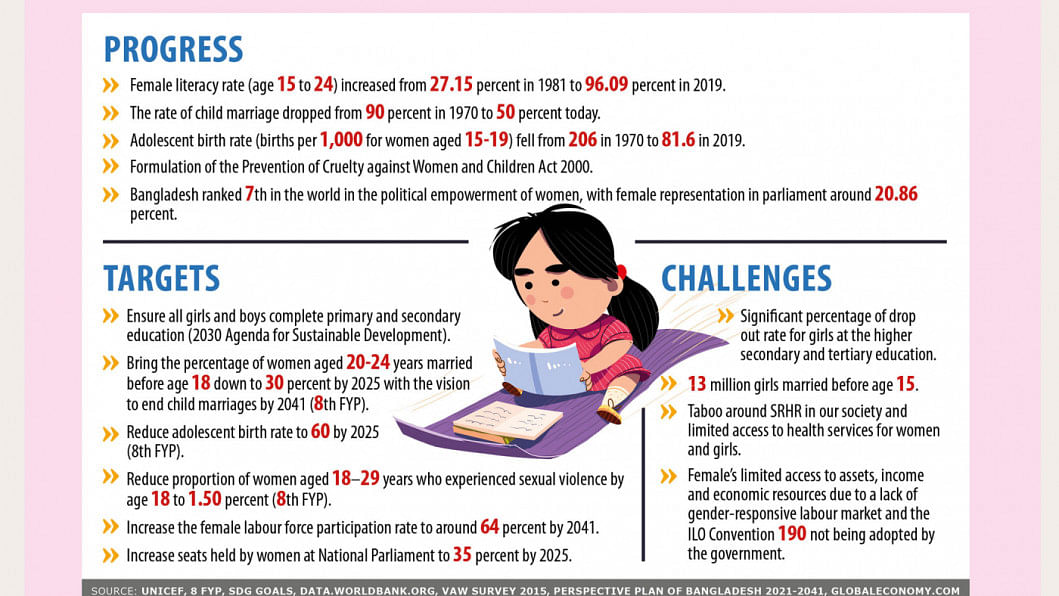
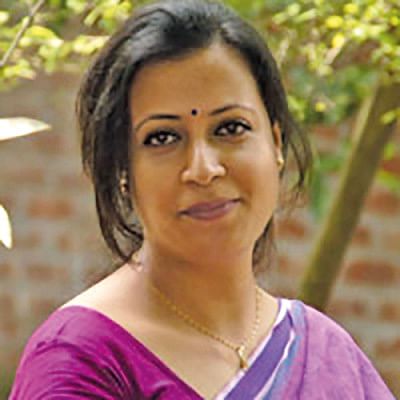
Morium Nesa, Manager, ActionAid Bangladesh, and Moderator of the Session
This year marks the 50th anniversary of Bangladesh. In the past 50 years, we have overcome numerous obstacles to get to where we are today. The women of Bangladesh have also experienced this progress despite the countless obstacles in their way.
How we raise young girls will determine the way in which they will contribute to society and have an impact on the country's future. We have organised today's discussion to talk about the current situation of the girl child in Bangladesh.
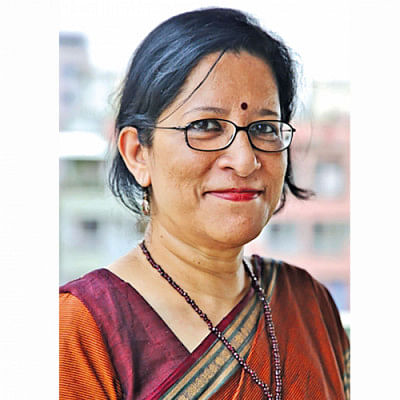
Farah Kabir, Country Director, ActionAid Bangladesh & Chair of the session
We always wish that our children, both girls and boys, grow up in a healthy and congenial environment so that they develop themselves with the intent to contribute to the society and the country. Bangladesh has made significant progress in empowering girls and young women in terms of indicators such as health, education, and political participation. However, girls and young women in Bangladesh, particularly those living in the marginalised segment of society, continue to face various challenges including multiple forms of violence. These challenges intensified during the Covid-19 pandemic in 2020. Bangladesh has been experiencing a loss of momentum in development due to the pandemic, which also threatens previous achievements, particularly in the areas of child marriage, enrolment of girls in schools and continuation of education for girls, young women, and women across the country.
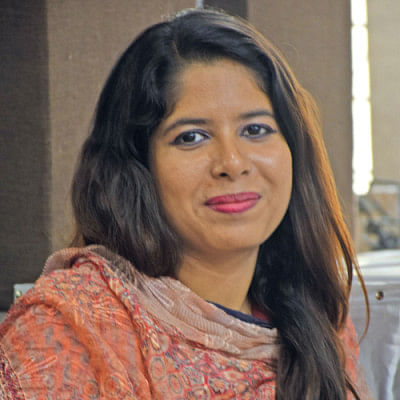
Afsana Alim, Programme Officer, ActionAid Bangladesh
The key focus areas for development of women and girls include education, child marriage, sexual and reproductive health and rights (SRHR), economic empowerment and gender-based violence (GBV). We have made great strides since independence in all these areas, the most notable being the rise in the female literacy rate and removing gender-biased content from our school curriculum.
The female literacy rate is critically important as it is closely related to the rate of child marriage. A UNICEF report pointed out that girls who stay in school have a lower chance of being a victim of child marriage. Only 11 percent of girls who stay in school are victims of child marriage whereas for girls who drop out during their primary or secondary education, the child marriage rate is 60 percent.
Policies such as the Child Marriage Restraint Act 2017, which criminalised child marriage, have played a great role in reducing the rate of child marriage. However, the Covid-19 pandemic hampered the progress made on this front. As many girls stopped attending schools due to the pandemic, their families married them off to reduce their financial burden. UNICEF has reported that globally, over 10 million girls are at risk of child marriage due to the pandemic. This will also increase the health-related consequences that young girls face such as adolescent pregnancy, maternal and child mortality etc.
Having to dropout from school and becoming a victim to child marriage also limits young girl's access to economic opportunities which ultimately leads to them being vulnerable to violence and exploitation.
If we want to break this vicious circle of deprivation, we must take necessary initiatives and action plans to achieve the targets set in the SDGs, our Eighth Five Year Plan (8th FYP) and Perspective plan 2041.
There are many challenges that we must overcome to reach these targets. One emerging challenge is the gender digital divide which excludes women from pursuing their education in this digital age. According to a study from 2019, only 6.7 percent of women aged 15-19 have ever used a computer while only 46 percent of women have access to mobiles, and only 17.5 percent of women have access to the internet. The societal taboo around SRHR poses a challenge towards making SRHR services more accessible for women. The limited access to assets, income and economic resources for women is another problem that we must address. The social acceptance of gender-based violence threatens to undo our progress in achieving gender equity.
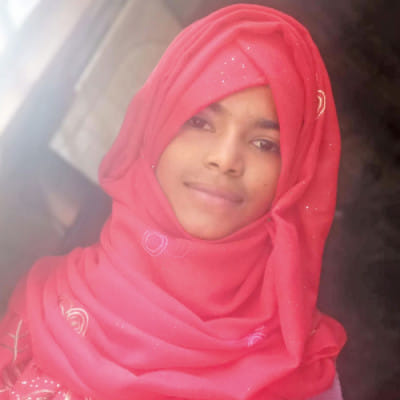
Aziza Parvin, Member, Bardoash Shapla Jubo Foundation, Naogaon
My mother had to start taking care of her family at a very young age. She did not have the opportunity to pursue her education. Today, I am here discussing how we can make our country a better place for girls in the future. This is something that neither my mother nor my grandmother could have dreamed of doing. That is why I am grateful to be able to pursue my education while also working in a social group that is working to end child marriage in our union.
On multiple occasions, we stopped incidents of child marriage and helped the authority to punish the culprits. These interventions restrained other people from marrying off their girl children. However, the Covid-19 pandemic seriously affected our activities which resulted in the rise of child marriage in our locality.

Rawnak Jahan, Representative, Girls Not Brides
Due to the Covid-19 pandemic, we won't be able to achieve many of the SDGs within the given timeline. We couldn't continue our work at the community level on changing social norms or advocating for law reforms. Girl children have faced additional restrictions on their mobility. Therefore, we must change our strategy and our youth leaders must work more fearlessly.
Girls Not Brides (GNB) is going to conduct a study to explore the factors that have contributed to the rise in child marriage and the extent to which the rate has increased. The findings of the study will help us create our advocacy plan.

Solika Akter, Activista, Dhaka-YFF Network
In the Shezan juice factory fire, many children aged between 14 and 19 years died. They had joined the factory because they couldn't continue their education during the pandemic. Child labour persists in urban areas since parents want their children to make an income rather than sit at home.
Female students over the age of 20 who are married face many challenges since they have to leave their domestic responsibilities to attend classes. Sometimes, these students even have to bring their babies to class because they have no other option. It seriously hampers their education.

Miftahul Jannat Bushra,
Vice President, Onirban Jubo Sangathan, Nilphamari
Online classes were being held in the villages, but not all children were able to join the classes because many do not own smartphones and cannot afford to buy one. Those who do have smartphones had no idea how to do classes on Zoom. Many also experienced cyberbullying when they opened Facebook accounts to join classes on the social media platform. They did not have information on how to prevent bullying. Moreover, girls who face cyberbullying never get justice. Hence, many parents are afraid to let their children use smartphones. Awareness surrounding safe internet use is much lower in rural areas than in urban areas, so many students are unaware of which websites are good and which are bad.
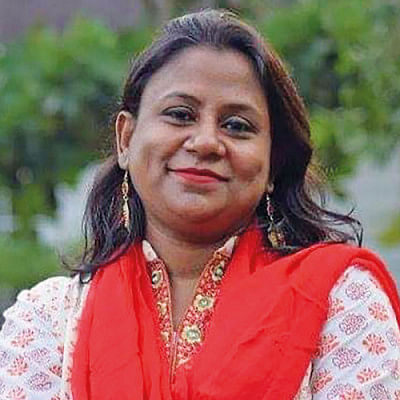
Halima Akter, Manager, Policy & Advocacy, Educo Bangladesh
18 months of school closure has led to many girls dropping out. The online education facilities were not available for many students, especially those in rural areas. The high drop-out rate of female students has led to a high child marriage rate. According to one of our reports, between August 2020 and August 2021, 1,253 child marriages in 136 unions have taken place, and 63 child marriages have been stopped. These numbers are 13 percent higher than those of 2019. Those who work in the education sector need to identify the reasons for students dropping out and create a database based on this information. Appropriate measures can be taken after the database has been developed. We perhaps can't bring the children who have been married off back into education. Still, we need to support those at risk of child marriage by raising awareness among their families about the importance of formal education. We should also encourage young girls to participate in vocational training alongside their traditional education so that they feel more empowered.
With the digitalisation of education, educators should help their students become aware of the safe use of internet. Parents should also monitor their children's internet use to ensure cyber safety.

Nasima Akhter, Young Entrepreneur, Chattogram
When I started this business I faced a lot of criticism, but I didn't give up. Due to the pandemic, I have been struggling to run my parlour business as the number of customers has dwindled. However, I haven't lost my morale.
I went through training so that I could turn my parlour business into a success story, but underprivileged women like me rarely get such opportunities. I urge the government to create income-generating opportunities for underprivileged women.
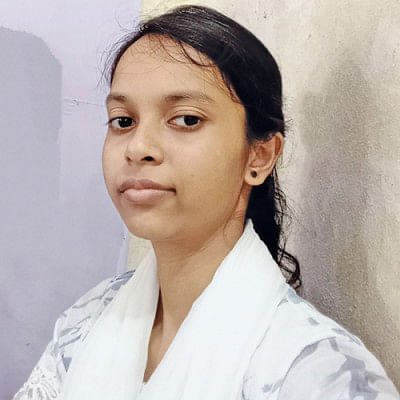
Purnima Halder, Secretary, Rising Star Youth Group, Bagerhat
We have been facing many natural disasters in Bagerhat. There is a shortage of drinking water in my community. Women and girls travel far to fetch drinking water, which is a massive challenge.
Another massive challenge is salinity. Due to salinity in the coastal area, families, particularly those who are dependent on agriculture, are facing increasing hardship. They are prone to marrying off their girl children to lessen their financial burden.

Priodarshine Auvi, Programme Analyst, Climate Change and Gender Equality, UN Women
Although the Covid-19 pandemic has been a significant setback to development, we have also been constantly facing challenges due to natural disasters. After a cyclone or similar disaster, when students re-join school, the number of returning female students is low. Many of them drop out or are married off as an alternative coping mechanism as families face food shortages during the disaster.
We should consider whether Guardians' negative perception of internet and smartphone use only applies to girls, and causes more girls to be deprived of education which is being increasingly digitalised.
While it's essential to provide children with information about cyber safety, it is also crucial to raise awareness at the community level about the importance of having access to information.
In our research, we found that many people who were laid off during the pandemic returned to their communities in climate-vulnerable areas. Many were youths. These unemployed young men were involved in sexual harassment. Parents were worried about their daughters' safety and decided to marry them off to protect them.

Syeda Samara Mortada,
Regional Movement Builder, SheDecides, Asia region
A 2010 study in Bangladesh found that approximately 231,400 women were treated for complications arising from abortions done outside of a proper clinic. Abortion through menstrual regulation, which is legal in Bangladesh, is less than half the total number of abortions. This issue affecting adolescent girls is crucial and deserves more attention.
The Penal Code still has five clauses on anti-abortion. Abortion is illegal even for a rape victim. We have been trying to repeal such clauses for a long time. The movement must include grassroots people alongside policymakers, NGOs and INGOs.

Nasima Akhter Joly, Secretary, National Girl Child Advocacy Forum
Justice is often denied when it comes to the girl child. As an example, each year many rape cases are filed at police stations, but proper judgement on such cases is rare. While there is a law against child marriage, we continue to see many cases of child marriage which are never legally prosecuted.
Violence against women and girls has also increased during the pandemic. Due to the social position of women, most of the cases of rape, GBV and sexual violence have not been resolved. The families of victims are often threatened, and they avoid pursuing legal action due to these threats. Some families think that marriage is the ultimate solution to prevent their girls from facing this kind of violence but, in many cases, girls who are victims of child marriage also end up facing such violence.
During this period, 813 young girls were raped, 193 were murdered, and 157 committed suicide. These young girls who are victims of child marriage, rape and other forms of violence often suffer from mental health problems due to their trauma. Therefore, we have to address this mental health crisis immediately. Moreover, a comprehensive law must be created that will combat sexual violence.
The government should run a survey to determine the current condition of the victims of child marriage. Our focus should be to bring them back into schools or even online education through the mobile, internet, or television.
Farah Kabir, Country Director, ActionAid Bangladesh
We have identified the problems and now we must seek out the solutions. We all know the number of child marriage increased during the pandemic. We need to gather evidence and determine the actual number of child marriages that have taken place in 2020/21. This will help us address the issue properly and take specific initiatives such as develop programmes to bring the girls back to education. Therefore, raising awareness on the issues will be a key component of any efforts which will include reaching out to parents and sensitising them regarding the equal rights of girls and boys.
We will need to take new initiatives to curb this issue of child marriage. The onus can't only be on the Ministry of Women and Child Affairs, rather all the relevant ministries such as law, planning, education and local government should join in this effort. Our laws for preventing child marriage must also be reviewed again to understand whether it is the lack of proper implementation or the framing of the laws that is resulting in a failure to stop child marriage.
Moreover, for the realization of the full potentials of girls, young women and women in nation building we must address the issues of gender biased digital divide. This will be best done by ensuring access to digital technologies and services for girls and women. We must create scope and opportunity for girls and young women to participate in leadership spaces and for taking decisions. Along with that, government should incentivise young women to engage and enrol in the various skills development initiatives and courses online as well as offline. There is a need to ensure that there is a focus on marketable skill which will lead to an increased participation of women in the workforce.
Finally, I would like to address the issue of mental health. The pandemic has increased the vulnerabilities of girls and young women leading to a rise in the number of them suffering from mental depression. We must provide support to them with required psycho-social services. We will need to support the parents and families as well to cope with these situation and support girls and women.
Recommendations
- Raise awareness among the most vulnerable groups about child marriage, GBV and SRHR.
- Address the gender digital divide by ensuring access for girls and women to digital technologies.
- Carry out mass campaigns to make people aware of the importance of education for girls.
- Conduct a survey to determine the actual number of victims of child marriage.
- Re-evaluate the laws regarding prevention of child marriage.
- Ensure access to proper menstrual hygiene management in educational institutes.
- Provide mental health support for girls.
- Fight gender-based stereotypes that contribute towards perpetuating gender inequalities.

 For all latest news, follow The Daily Star's Google News channel.
For all latest news, follow The Daily Star's Google News channel. 



Comments